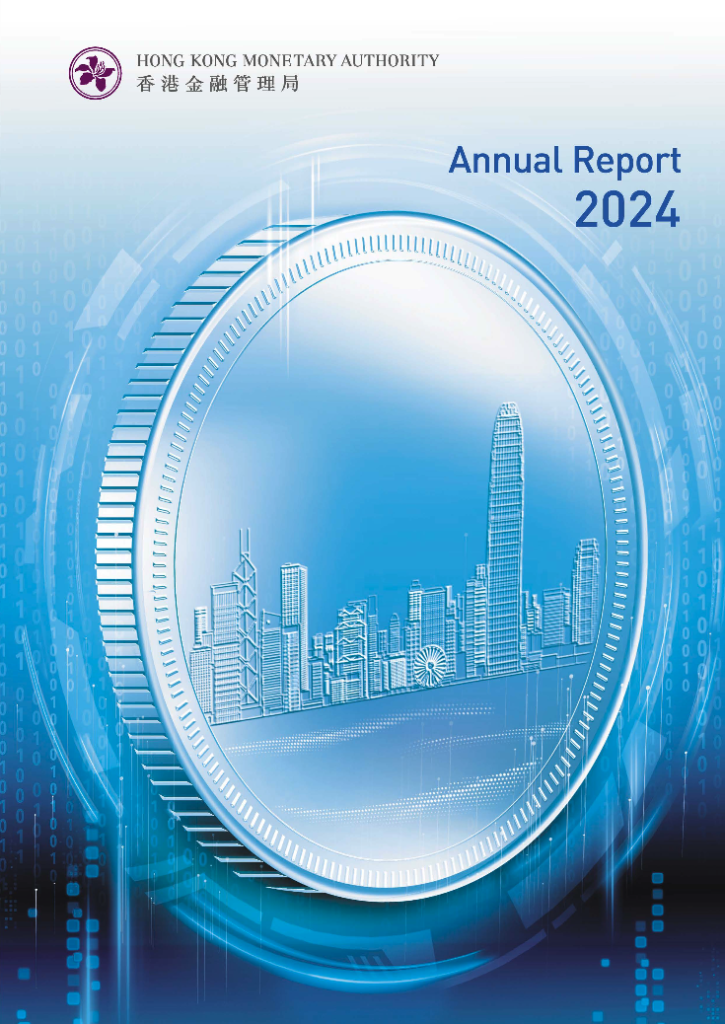
The Velocity of Change: Decoding HKMA's 2025 Priorities for Competitive Advantage
More Than a Recap: HKMA’s Annual Report Fires the Starting Gun for 2025’s Strategic Race
In a global landscape the HKMA itself describes as marked by “heightened uncertainty” and “paradigm shifts,” their 2024 Annual Report does more than chronicle the past year. It strategically signposts the path for 2025, revealing a clear acceleration in regulatory expectations and technological integration. For senior leaders across Hong Kong’s financial spectrum – from established institutions to agile fintechs and essential regtechs – this document is less a review and more a critical briefing. It outlines the fault lines of competition and the imperatives for future success. Simply reacting to these shifts is no longer enough; proactive, strategic adaptation is now the price of leadership.
📖 Ref: HKMA (2025) Annual Report 2024
The Interconnected Future: Beyond Digital Adoption to Ecosystem Integration
The HKMA’s commitment to its “Fintech 2025” strategy is demonstrably intensifying, moving beyond mere encouragement to fostering a deeply interconnected digital financial ecosystem. The 2025 priorities, building on 2024’s progress, paint a clear picture: advancing multiple CBDC projects (mBridge, e-HKD+, Project Ensemble), operationalising the stablecoin regime, enhancing data infrastructure through CDI-CDEG linkage, and expanding FPS capabilities are not isolated initiatives. They are foundational elements of a future where finance operates seamlessly across new digital rails.
Predictive Insight: The explicit focus on projects like mBridge and Project Ensemble, coupled with the stablecoin sandbox, strongly suggests the HKMA anticipates a rapid convergence of traditional and digital finance, demanding robust interoperability standards. We predict heightened supervisory focus will shift towards ensuring seamless, secure interaction between these new platforms (CBDCs, tokenised assets, traditional systems). Furthermore, the proactive launch of the GenAI Sandbox before widespread adoption signals an expectation that effective AI governance will become a baseline regulatory requirement, not an afterthought. Firms delaying strategic investment in interoperable systems or robust AI governance frameworks risk significant operational friction and future compliance challenges.
The New Resilience Doctrine: From Withstanding Shocks to Anticipating Threats
Acknowledging global volatility, the HKMA’s 2025 agenda elevates resilience from a defensive posture to a strategic capability. While prudent credit risk management remains crucial, the emphasis is broadening significantly. The planned full-scale cross-sectoral Cyber Mapping exercise, intensified focus on third-party risk (a direct lesson from global incidents like CrowdStrike), and the drive to fully implement operational resilience frameworks (requiring mapping, testing, and remediation) signal a fundamental shift. This isn’t just about having buffers; it’s about possessing the foresight and agility to navigate disruption across the entire operational spectrum. The continued refinement of the resolution regime (LAC, OCIR, LFIR) further reinforces the need for demonstrable preparedness for severe scenarios.
Predictive Insight: The HKMA’s detailed focus on operational and cyber resilience, especially systemic interconnections, indicates a future where regulatory assessments will increasingly probe the demonstrable effectiveness and proactive nature of resilience measures. Simply having policies will be insufficient. We anticipate:
- Greater demand for evidence of robust, cross-functional scenario testing against severe but plausible disruptions.
- Intensified scrutiny of third-party dependencies and the contractual/operational safeguards in place.
- A potential push towards mandating specific technological standards or capabilities for cyber defence and recovery.
This necessitates a strategic view of resilience, integrating technology, operations, and risk management, rather than treating them as separate silos.

Breaking Down Walls: The Unstoppable Rise of Collaborative Compliance
Perhaps the most profound strategic shift signalled is the move towards collective defence, particularly in combating financial crime. The Banking (Amendment) Bill 2025, facilitating bank-to-bank information sharing with a “safe harbour,” is a legislative catalyst. Coupled with the expectation that banks leverage expanded Scameter data using network analytics (not just screening) and contribute intelligence back to law enforcement, this clearly marks the end of purely institutional AML/CFT efforts. The HKMA’s emphasis on outcomes – disrupting mule networks, recovering funds – further underscores this collaborative imperative.
Predictive Insight: The legislative backing for information sharing, combined with the technological expectation of network analytics, strongly suggests that participation in collaborative intelligence platforms will transition from voluntary to quasi-mandatory. We foresee regulators developing metrics to assess an institution’s contribution to ecosystem security, not just its internal compliance. The ability to securely ingest, analyse, and share relevant data using sophisticated tools (likely AI-driven) will become a critical compliance capability and a potential source of competitive intelligence for proactive institutions.
Anchoring Strengths, Expanding Horizons: Hong Kong's Dual Strategy
The HKMA’s 2025 priorities clearly show a dual focus: reinforcing Hong Kong’s established strengths while actively cultivating new global connections. Enhancing the Mainland Connect schemes, deepening the offshore RMB hub’s capabilities, and fostering GBA integration remain central pillars. Simultaneously, the deliberate and structured outreach to the Middle East and ASEAN, evidenced by high-level visits and MoUs signed in 2024, signals a strategic intent to diversify and deepen international partnerships beyond traditional markets.
Predictive Insight: This dual strategy implies continued regulatory innovation aimed at facilitating two-way capital flows with the Mainland, demanding platform flexibility from market participants. Concurrently, the focus on new regions presents tangible opportunities for firms that can bridge financial services between Hong Kong and these rapidly growing economies. Understanding the specific financial needs and regulatory nuances of markets like the UAE, Saudi Arabia, Thailand, and Malaysia will be increasingly valuable.

Studio AM: Your Strategic Co-Pilot for Hong Kong's Evolving Landscape
The HKMA’s 2025 agenda is not a static checklist but a dynamic roadmap demanding strategic navigation. It calls for deeper technological integration, proactive resilience, collaborative intelligence, and demonstrable results. Studio AM’s Compliance-as-a-Service (CaaS) is engineered for this complex environment. We partner with financial leaders to move beyond reactive compliance, enabling you to:
- Decode & Operationalise: Translate the HKMA’s strategic direction into actionable, efficient operational realities.
- Integrate & Govern: Seamlessly adopt and manage critical technologies like AI and advanced analytics within a robust, compliant framework.
- Fortify & Demonstrate: Build and validate comprehensive resilience strategies that satisfy regulatory scrutiny and enhance business continuity.
- Connect & Collaborate: Equip your institution for the future of secure data sharing and ecosystem-wide risk management.
The HKMA has charted the course for 2025. The strategic imperative is to harness these insights, anticipate the trajectory, and build not just a compliant, but a competitively advantaged future.
Is your strategy truly future-proofed for the velocity of change? Engage Studio AM to transform HKMA’s vision into your strategic reality.




